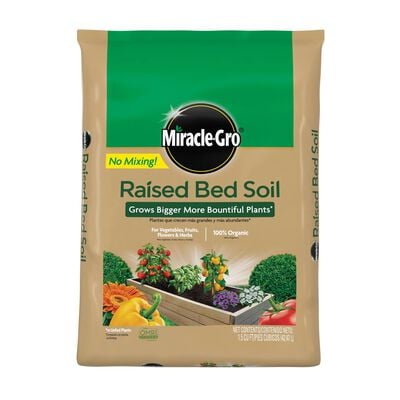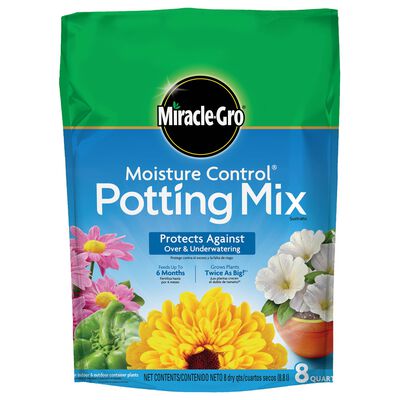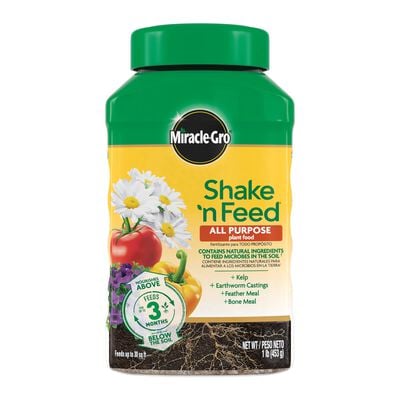
How to Prepare Your Garden for Winter
Do a few simple tasks in fall to improve your spring garden.
After spending so many warm months in the garden enjoying beautiful blooms and harvesting fresh vegetables, most gardeners don't even want to think about the cold weather that comes next. But, planning for winter is actually key to a successful start next spring. Seasoned gardeners often call this cold-weather garden prep "putting the garden to bed."
Take care of these essential fall tasks to "tuck in" your beloved garden for a cozy and restful winter so it can "wake up" next spring all ready to grow!
- Say Goodbye to Spent Plants
- Spruce Up the Garden Floor
- Weed & Mulch
- Protect Delicate Shrubs
- Build a Compost Pile—and a Weed Pile

1. Say Goodbye to Spent Plants
Gather every last one of your juicy tomatoes and zesty peppers before the first frost, and harvest any late-fall crops, like kale and carrots, before the ground freezes. Pull out spent veggie and annual flower plants completely, or cut them off at ground level, leaving their roots to decompose and enrich the soil.
After a few frosts, cleanly cut back herbaceous perennials to avoid springtime diseases and pests. Don’t pull them! Perennials' roots continue to live beneath the soil during the winter months. Just be sure to leave a few inches of stems above ground or place markers in each spot to make it easier to find and identify them come springtime.
It’s okay to leave some perennials standing, as they’ll provide visual interest and even some shelter for winter wildlife. Keep plants with strong stems and decorative seed heads, like purple cornflowers, “Autumn Joy” sedum, and perennials that set next year’s growth buds on woody stems, like lavender and Russian sage.
As you work, set aside any slimy, pest-damaged, or diseased foliage, along with any weeds that snuck in during the season, and put them on a separate weed pile away from your compost pile (and your garden) so it can decompose before it does more damage. The rest of what you’re pulling and cutting—aka the good stuff—should go on your compost pile to help nourish your next garden. (Read more about compost piles and weed piles below.)
Once all of the plants have been cleared, remove, clean, and store any cages, trellises, and other plant supports.

2. Spruce Up the Garden Floor
Even the tidiest garden needs attention by the time fall rolls around. Cleaning the garden floor removes conditions that can invite diseases, rodents, and insects. Grab garden gloves (such as these Water-Resistant Grip Gloves), a rake, and your favorite hand tools, then get to work ridding the garden floor of fallen leaves, dead plants, sticks, and other debris. Decide if it’s clean enough to toss onto your compost pile; if there’s any sign of mildew, insect activity, or disease, toss it on the weed pile instead. Be sure to sort out any waste that actually belongs in the trash or recycling, like weed trimmer line or nylon netting.

3. Weed & Mulch
Even though your garden is no longer actively growing, you still need to remove any weeds left behind after you’ve cleaned the garden floor. Otherwise, they may deposit seeds in the soil that could sneak up on you in the spring. Toss any weeds you pull on—you guessed it—the weed pile.
Help prevent weeds from popping up next spring by putting down a layer of bark mulch, like Earthgro® by Scotts® Mulch. This also helps prevent soil from losing moisture and lessens the effects of winter temperatures on the perennials, trees, and shrubs that remain. Your garden will look neat and tidy, and the bark mulch will naturally improve your soil over time. Just make sure to leave a little space between the mulch and your plant stems. Check out Why You Should Mulch to learn all about its many benefits.
4. Protect Delicate Shrubs
Some delicate shrubs and perennials, like bluebeard and butterfly bush, need a bit of extra protection to prepare for harsh winter weather. Spread a few inches of mulch over the roots or loosely cover them with lightweight fabric when heavy snow or ice are expected. Flowering shrubs, like hydrangeas and roses, benefit from being wrapped in burlap or caged with coarse mulching materials—which may even help them produce more flowers in the spring.

5. Build a Compost Pile—and a Weed Pile
If you don’t already have one, build a compost pile by layering a mixture of materials like spent and dead leaves (green or brown), grass clippings, “clean” plant trimmings, kitchen vegetable scraps, and a small amount of soil. (For a more polished look, you can purchase a compost barrel or build one yourself out of wooden pallets.) Add to it regularly and turn it with a shovel or rake, bringing material from the bottom up to the top, to help air circulate and the organic matter to decompose more quickly. Once it all breaks down, you’ll be left with nutrient-rich compost for next season’s garden.
Weeds and diseased plants need to be kept separate so they don’t “infect” your garden. (Home compost piles don’t generate enough heat to completely destroy weed seeds or disease organisms.) Start your weed pile on a hard surface like a tarp, cement, or gravel so nothing makes its way into the soil. Cover it with a tarp or plastic sheet to contain any seeds while everything decomposes and shrinks in the sun. You can keep adding to your weed pile over time—just don’t ever use anything from your weed pile in your garden!
Once you’ve put your garden to bed, take time to gather and store all of the accoutrements. Bring ornamental decorations indoors, drain hoses, sort and oil tools, clean containers, and organize all your gardening gear before you store it for the off-season. That way, everything will be all in one place—and easy to find—when you’re ready to go again next spring.


